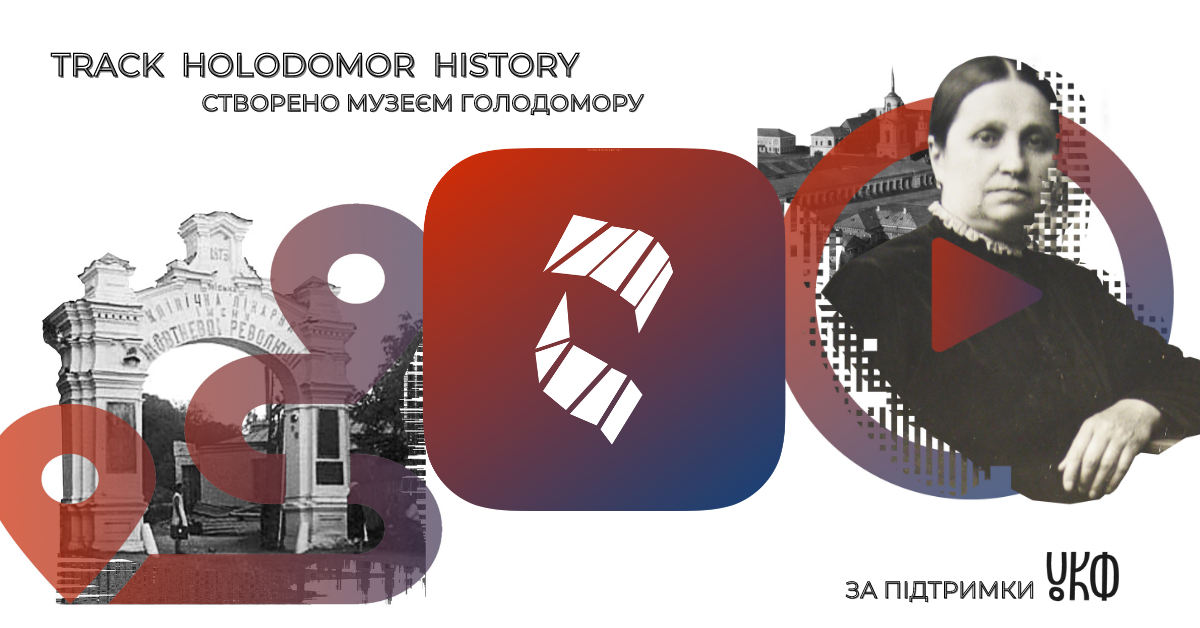Buildings such as the student canteen, Kyiv Pechersk Lavra or the apartment block on vulytsia Pushkinska remember the lives of students, orphans, villagers, workers, and even some Communist Party members who were linked to the genocidal famine. The new mobile app Track Holodomor History tells the story of Holodomor —the Soviet genocide against Ukrainians— by exploring the history of particular buildings of Kyiv through the memories of eyewitnesses and official documents.
Screenshots from the app
The application includes 13 sites in Kyiv, including the Holodomor Museum.
It allows users to read information about each site and why it is important. Readily available are testimonies, quotes from diaries, memories from Kyivian residents of 1932-1933. Each site also contains archival documents, photos, and videos.
If you are visiting Kyiv, the app can be tied to your location, allowing you to create your own excursion route with a virtual guide for quarantine times. The app’s special feature is “hidden content” for each site that is unlocked when you come within 400 meters of the location.
Track Holodomor History is a completely unique product. It is educational, but not boring. The app collects facts, documents, memories of people and stories of whole families, old photos and video chronicles, voiced, translated into comics. The story does not remain in the textbook, but comes to life in your hands. All the information in the application is not available to the average person in any other form –– it is either in the archives, or scattered in various sources that need to be verified. The story is much closer – In the houses where we live, in the streets we walk on, and now just in our pockets – In a smartphone,” said project curator Iryna Kurhanska during the presentation of the app.
Coming closer than 400 meters to the site, you can unlock the hidden content.
Currently, the application is available in Ukrainian and English and can be downloaded from AppStore and Google Play.

Kurhanska also noted that the application is far from being complete. The team doesn’t plan to stop with Kyiv. There is a lot of data available for other big Ukrainian cities – Kharkiv, Dnipro, and Odesa. Therefore, they want to include the sites in these major cities among others in the app and make a Ukraine-wide application about the Holodomor.
You can follow the progress of the project on the Holodomor Museum Page or Instagram:
View this post on Instagram
Read more:
- “Let me take the wife too, when I reach the cemetery she will be dead.” Stories of Holodomor survivors
- Holodomor: Stalin’s punishment for 5,000 peasant revolts
- See which countries recognize Ukraine’s Holodomor famine as genocide on an interactive map
- Stalin’s management of Red Army proves Holodomor a Soviet genocide against Ukrainians
- So how many Ukrainians died in the Holodomor?
- The Hunger for Truth: Documentary about Canadian journalist who was first to report about Holodomor
- Stalin’s anti-Ukrainian policies in RSFSR prove Holodomor was a genocide
- Austrian engineer captures the horror of the Holodomor in 1932-33
- The Holodomor of 1932-33. Why Stalin feared Ukrainians
- ‘Stalin prepared the Holodomor the same way Hitler did the Holocaust,’ Hrynevych says










